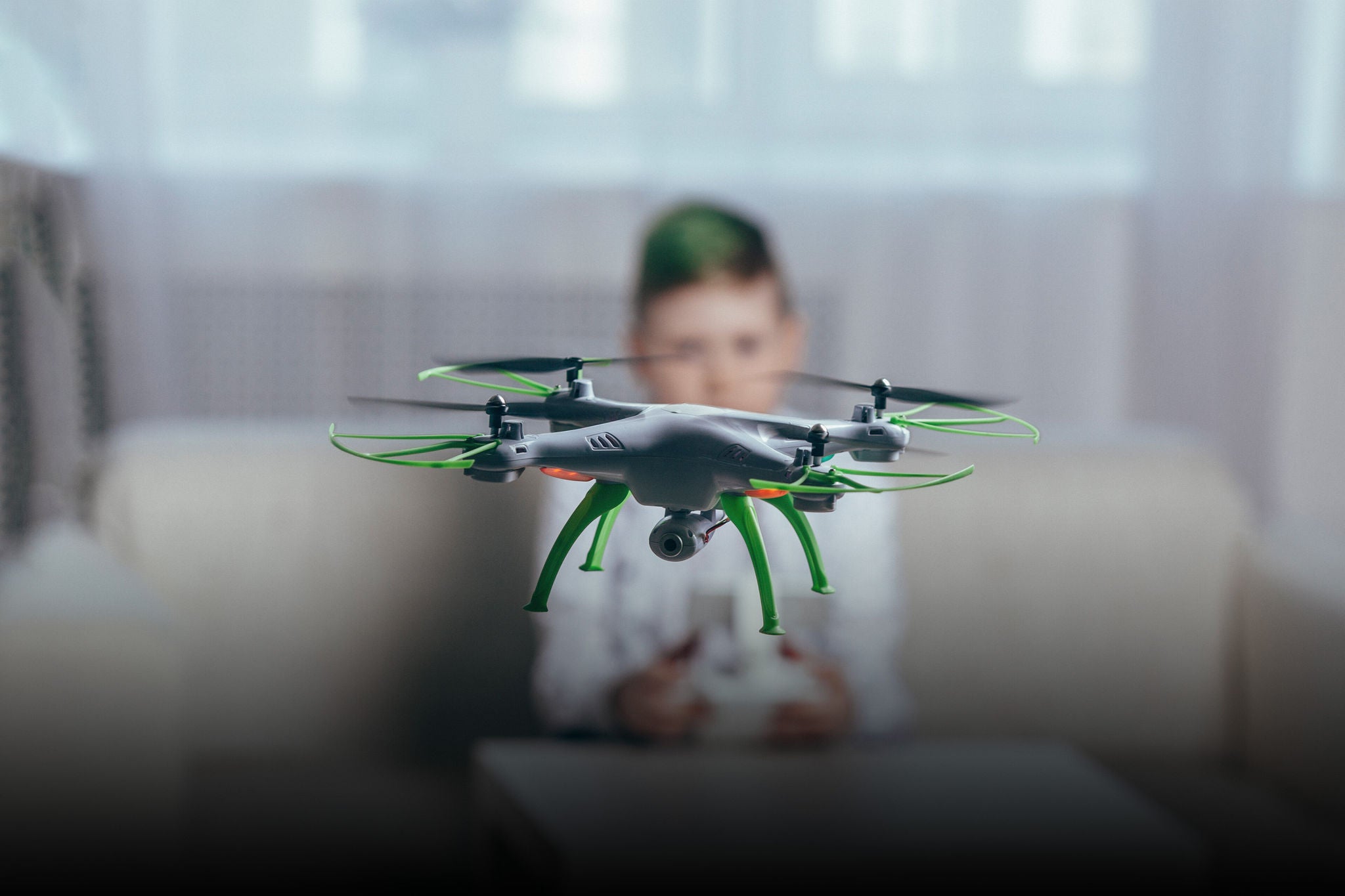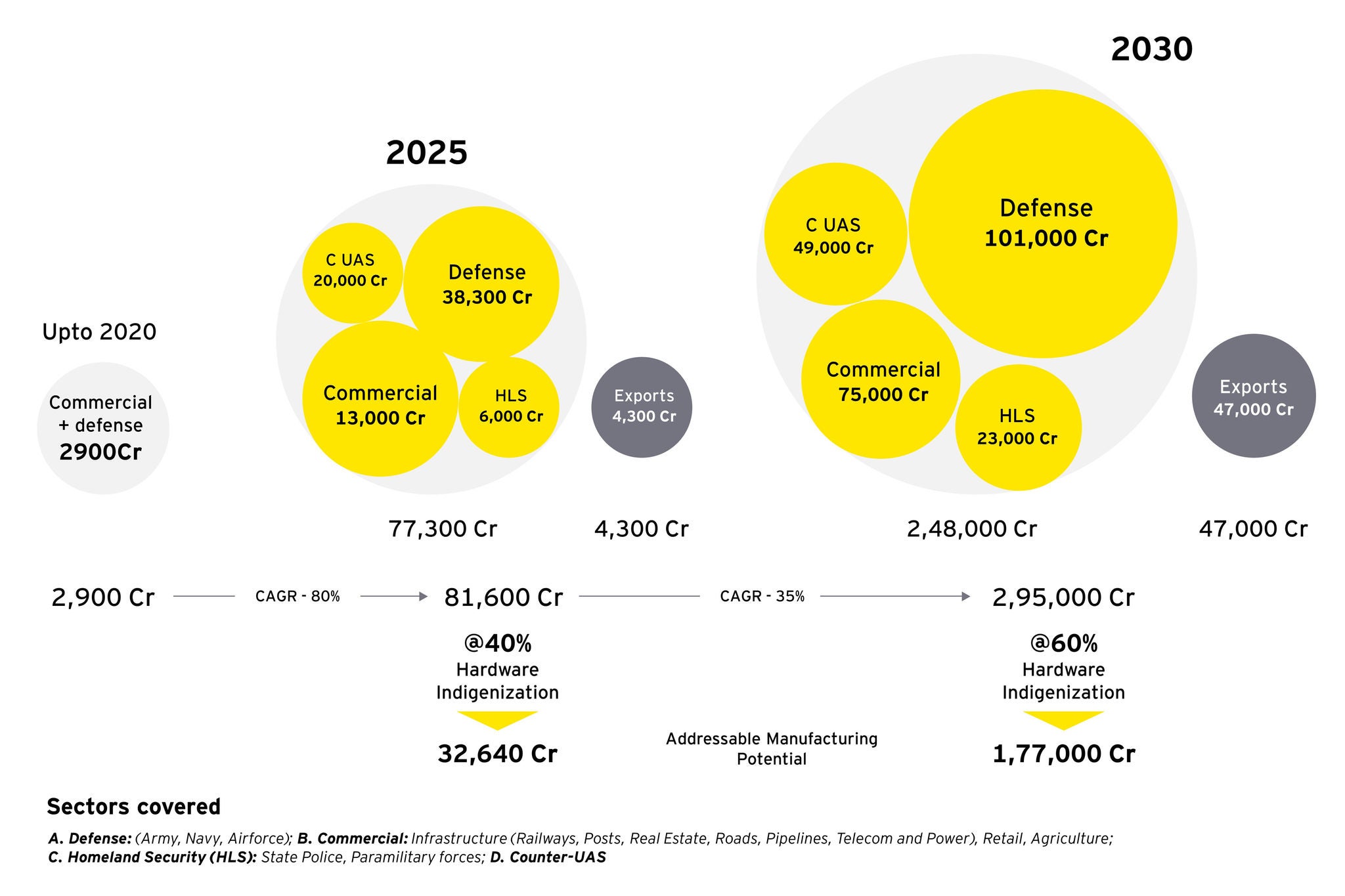EY refers to the global organization, and may refer to one or more, of the member firms of Ernst & Young Global Limited, each of which is a separate legal entity. Ernst & Young Global Limited, a UK company limited by guarantee, does not provide services to clients.
How EY can help
-
Drive business growth with technology transformation solutions at EY - integrating tech, operations & architecture to build agile, data-driven organizations
Read more
Demand creation
- Various ministries/departments of the central government can provide a much-needed fillip to demand of drones by encouraging adoption in flagship schemes and projects.
- States can help supplement the effort through policy and incentives.
- Simplified procurement procedures, including a commitment to procure 25% of quantities in single vendor situations can boost demand.
Facilitating manufacturing
- Collateral-free and personal guarantee-free project finance loans at low interest rates to start-ups and MSMEs from financial institutions can help boost manufacturing in the country. Operationalization of drone testing sites can further support manufacturers.
- Government would also need to urgently support local manufacturing of components and value addition to increase localization to get quality with economies of scale.
Attracting investments
- To inspire confidence in the Indian drone ecosystem, the government could provide an opportunity to a few anchor companies willing to commit investments to present ‘plans’ and ‘expectations’.
Enhancing exports
- It would be imperative to resolve ambiguities in the Special Chemicals, Organisms, Materials, Equipment and Technologies (SCOMET) licensing process. Further, the procedure for taking drones abroad for international exhibitions and demonstrations merit simplification.
Other dimensions
- It is imperative to remove the need for Industrial Licensing (IL) for drones that are not a part of the defense items list.
- Government-to-government deals would facilitate transfers of technology and strategic partnerships.
- An inter-ministerial committee on drones and counter-drones could act as a nodal body shepherding innovation, technology development, reciprocity issues and customs duties to make the drones sector globally competitive.
- Due impetus on subsidizing skilling costs for training and development would be required to establish a drone ecosystem in the country.







